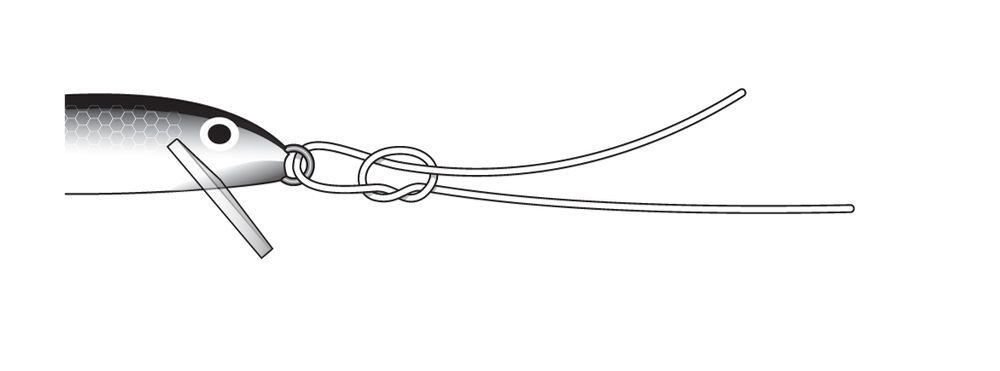
The Rapala knot is a fishing knot favoured by many lure anglers. Easy to tie, the Rapala knot allows you to attach a lure to your leader while still allowing the lure to move freely, just like with a staple. Here are the steps to follow to make a Rapala knot.
Advantages and disadvantages of the Rapala knot
The Rapala knot is firstly a fishing knot very easy to reproduce for lure fishing.
In addition, its property means that the Rapala knot can easily replace a staple or a broken ring. The loop formed by the knot allows the lure to swim freely without damaging the line. The Rapala knot is therefore very useful for lures with strong wobbling or rolling action such as crankbaits, jerbaits, stickaits and swimbaits.
On the other hand, after a certain leader diameter, it becomes difficult to perform. Under these conditions, a lighter knot could therefore replace this node. Finally and unlike a staple, changing the lure will require redo the knotThis can be a waste of time for the angler. A staple may therefore be preferable for fishing where the lure is changed regularly.
How to make a Rapala knot in pictures
- Start by making a loop with your leader, located between 5 to 10 cm from the end of the latter. Then pass the end through the eyelet of your lure

2. Pass the end of your leader through the loop initially formed.

3. Make 4 to 5 turns around the main line

4. Pass the end of the leader through the loop.

5. Iron the end of the leader through the loop formed in the upper part of the knot.

6. Moisten the assembly to minimise friction. Tighten the knot and cut the excess line. Your knot is now ready to fish

How to make a Rapala knot in video
Rapala knot or staple?
For practical reasons, a staple is a good compromise for fishing in conditions requiring you to change your lure very often. However, a staple can easily open or even break on large fish. For this reason, we advise you to use this knot when you are looking for large fish, such as the big ones. black bass, the pike or the catfish.
Like all tackle, don't hesitate to inspect your knot every time you catch or snag it to avoid any potential breakage. Whether it's a rapala knot or a staple, an accident can happen so quickly.... So it's best to prevent it.
Useful links completing this article:
Palomar knot: the easy and reliable fishing knot
Braid or nylon: Which line to choose for lure fishing?
FG knot: How to make a perfect FG knot ?
Casting or spinning: which choice to adopt?
Fishing knot: 5 essential fishing knots to master




